Life and death at the Dar Al Shifa hospital on Aleppo’s front line
‘My wife told me: ‘we live together or we die together,’ so she brought our children and now, we all live here, in Dar Al Shifa.’
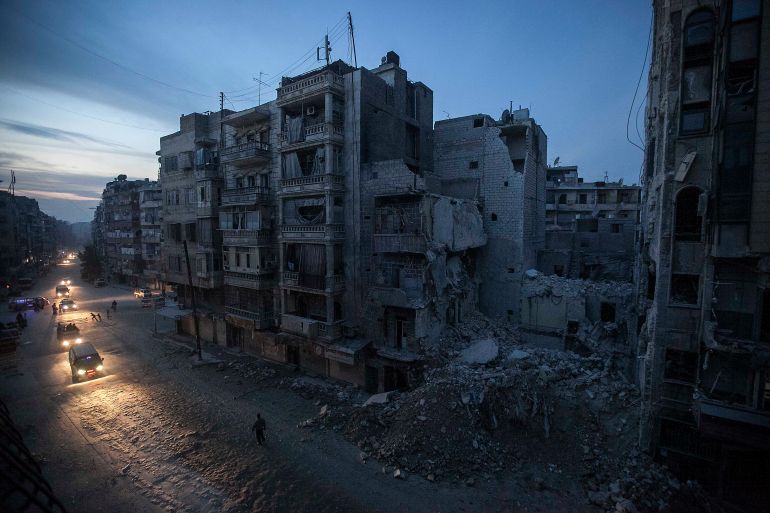
Ten years ago, the Arab Spring erupted across the Middle East and North Africa. In Syria, months of mass protests against Bashar al-Assad’s government in 2011 led to a government crackdown, widespread unrest and years of civil war.
In 2012, documentary photographer Narciso Contreras spent months in Aleppo documenting the war. Here he tells the story of five months in a hospital at the heart of the rebellion.
Keep reading
list of 4 itemsEgypt’s President el-Sisi to run for third term, opposition decry pressure
Tunisian police arrest two top officials in Ennahda opposition party
‘Slow murder’: Hundreds of prisoners stage Bahrain’s largest hunger strike
It was November 21, 2012, when Bashar al-Assad’s forces targeted the Dar Al Shifa hospital in Aleppo with a missile strike. I had just returned from Aleppo to my home base in the Turkish border city of Antakya. Since July, I had been crossing to and fro into northern Syria to document the uprising and its aftermath at the medical unit. Now, I watched the news in shock, as the cameras moved steadily across the dimensions of the catastrophe.
The eastern flank of the hospital had been reduced to rubble; 25 people had been killed, among them four members of the volunteer medical staff, the rest a grim mix of civilians and combatants.
In the news footage, thick smoke filled the air. Human silhouettes – powder-white from the wreckage – wandered around in a daze, their hands over their mouths to stop them from breathing in the dust. I recognised some faces among the survivors: people in medical uniforms who seemed to be in shock, and other field personnel who cried out for those who were missing. Meanwhile, men in camouflage fatigues with weapons removed debris as they searched for their comrades-in-arms, while others sat hopelessly amidst the rubble, wiping the tears streaming down their faces.
Once a barely-known private clinic owned by a businessman loyal to Bashar al-Assad, Dar Al Shifa was taken over by volunteer doctors, nurses and aides when the war entered Aleppo city in July 2012. It soon became a medical hub for anyone needing care.
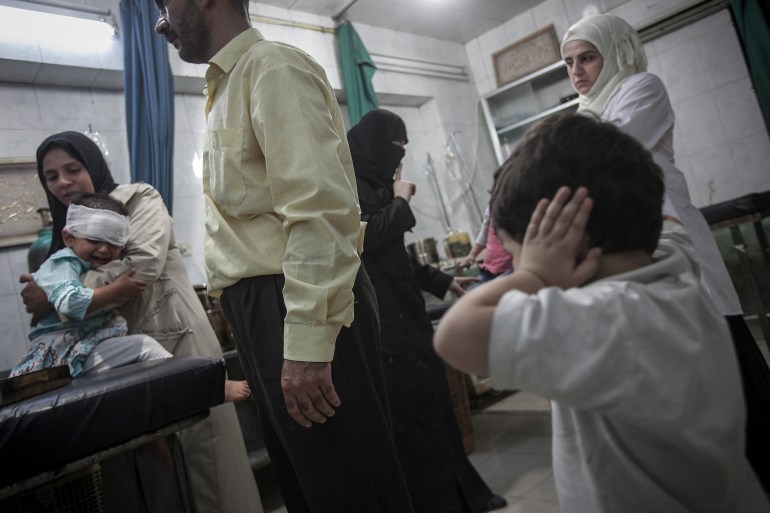
The team worked in a frenzy, day and night, helping the wounded, which very often included children and civilian victims of attacks, many with shrapnel in their bodies, who were brought in screaming in pain. They were treated by the medics who also tended to combatants riddled with gaping wounds from artillery and gunfire.
The volunteers did all they could to help those who needed it, aware that they were risking their lives but committed to their oath to treat all injured people regardless of who they were. And in those months, the hospital became a symbol of both humaneness and civilian resistance.
July
In the months following the July 2012 start of the Battle of Aleppo – an armed rebel offensive against Assad’s forces – troops of gunmen took over the eastern working-class neighbourhoods of the city: Hellok, Bustan al-Pasha, Shik Khider, Sakhour, Karm al-Myassar and Karm al-Jazmati. These were populated civilian areas surrounding the enclave where the hospital was located, all of them under continuous shelling and bombardments from the Syrian army.
Just 500 metres (540 yards) from the ravaged al-Mushatieh, a front line under heavy shelling, Dar Al Shifa continued providing emergency services despite the danger. All in all, in those months of fighting from July to late November, a barrage of shells targeted the hospital more than 20 times, including seven direct hits. The upper floors were destroyed, while the bottom three stories remained usable; two of them serving as dormitories for the staff, although littered with debris and stained with blood.
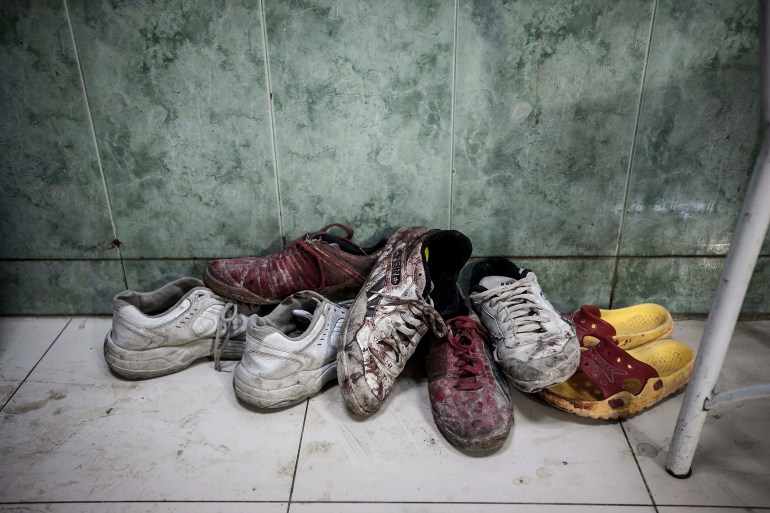
The hospital became one of the main ports for the wounded in the rebel-controlled neighbourhoods of the city. It became routine that, after a burst of gunfire or a loud bomb blast thundered across the city, a clatter of car horns and shouts for “help” would follow. This would announce the waves of dead and wounded who would then flow into the ICU, and pandemonium would be unleashed.
Those who were badly wounded were wheeled hastily into the three-bed emergency ward for treatment, while the powder-whitened faces of other survivors cried out for help and traumatised children and youth arrived in shock.
In minutes, the ground floor of the unit would be filled with wounded men in their final moments – many with severed limbs on the floor beside them, as they made loud declarations of faith mixed with heart-wrenching despair. Blood was everywhere. Because the hospital had no morgue, the dead bodies would be piled in a building next door or left on the sidewalk, waiting to be claimed by relatives.
August
One day in mid-August, I arrived at the hospital just as rounds of shells landed in the vicinity.
Word spread quickly – a queue of people waiting at a nearby bakery had been hit by a mortar. Minutes later, dozens of civilians rushed into the clinic. Medical staff frantically tried to help. But there was not enough space, so the wounded were left scattered on the floor next to the bodies of the dead.
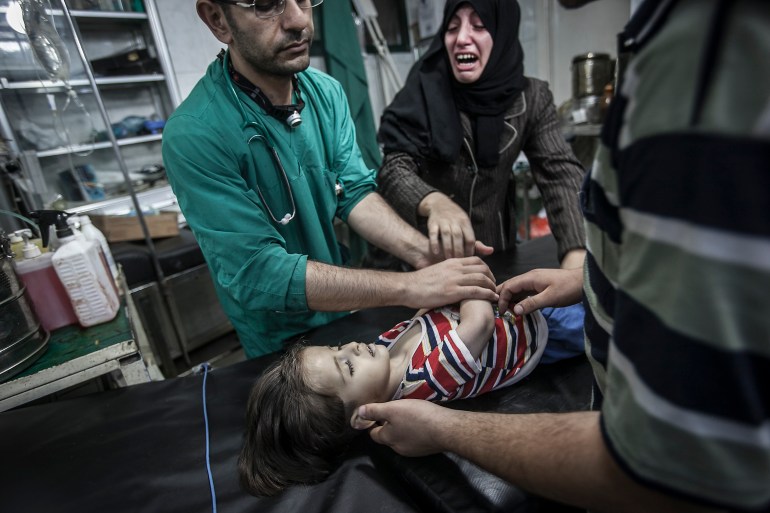
There were too many children injured that day. I took the hand of a teenager. He had a hole in his chest made by shrapnel. His breath was laboured, his eyes fixed and nearly lifeless, staring at the emptiness in front of him. Then his hand lost its strength, his grip let go of mine, and he lost consciousness.
In front of me, near the entrance, another child wept on the floor. Terrified, his foot bleeding from a shrapnel wound, he kept holding tight onto a coin in his hand. He had been standing in the queue to buy bread when the mortar hit the bakery. When his mother came to find him he opened his hand, giving back the coin. “Please mama, don’t send me out for bread again,” he told her, “I don’t want to go and buy bread any more.”
September
One day in early September, I noticed two seemingly lost yet unafraid children wandering among the wounded and the puddles of blood in the hospital. They were Omar, 4, and Rashed, two-and-a-half. They crossed the lobby undeterred when a wounded fighter was brought in after being shot in the head by an enemy sniper.
Calling after them was Fatimah, a woman wearing a black coat and a niqab. She was their mother and the wife of Dr Osman Aljash, 30, one of the doctors working tirelessly to help. Dr Osman got to work treating the wounded fighter, but there was severe brain damage. As the man slipped into a coma, tears streamed down his cheeks. Dr Osman gave him first aid but soon had to declare him dead.
The children meanwhile continued playing among the patients as if they were at a playground.
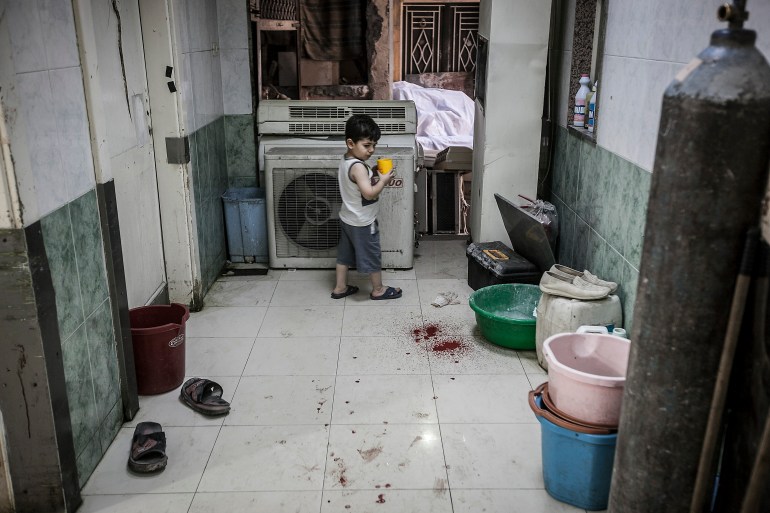
“They are used to this,” Dr Osman said, taking Rashed into his arms. “I have a family apartment, but there is no such thing as a safe place to stay in the city. Even more, because people are in need of medical care, I decided to stay close – in the hospital. No matter the danger, I’m meant to help,” he explained.
“I won’t be the first one to die, and shall not be the last. I’ll stay till the end,” he said. “My wife, Fatimah, told me: ‘We live together or we die together,’ so she brought our children and now we all live here in Dar Al Shifa.”
Fatimah’s resolve inspired me to stay and I moved into the hospital with Dr Osman and his family for a week that September. I observed the couple and their relentless determination to help those in need, in spite of having to put themselves and their children’s lives at risk. The third floor of the hospital had become an area for the family to live in. There, Fatimah rustled up a kitchen and rigged together a cosy bedroom in one of the semi-deserted wards.
On those days, she would split her time between running after the children as they played amid the debris and assisting in the hospital. When the new wounded arrived, Dr Osman would try to save them while Fatimah rushed to the lobby to help the nurses mop up puddles of blood – Omar and Rashed standing in a corner staring at their mother’s frantic movement. Later, Rashed would copy her mother’s actions, picking up a broom and playing clean-up at the back door next to two fighters covered in white powder who had survived an attack.
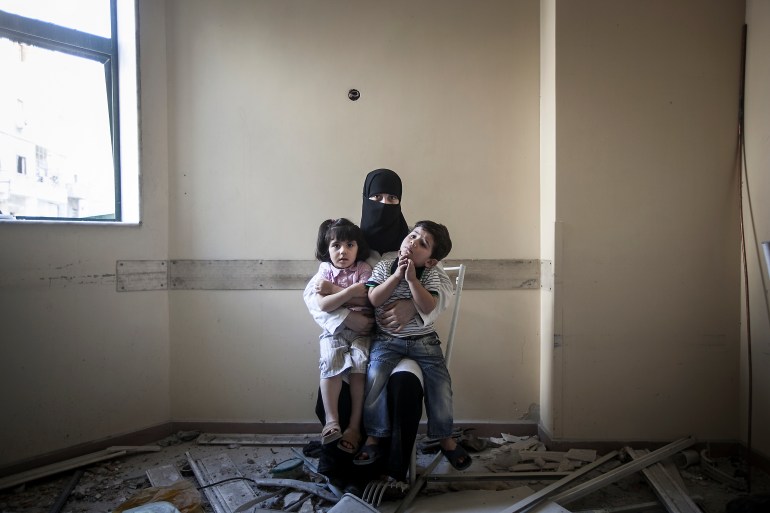
One evening, a playful moment was suddenly halted by a round of loud blasts. Omar was sitting at the front desk in the lobby. Fatimah grabbed him by the hand, picking Rashed up with her other arm, and pulling them both towards the staircase. Dr Osman called for calm but the medical staff were frightened. The hospital was under attack. A second blast hit the building’s upper floors. A terrified Rashed threw his arms around Fatimah’s neck, while Omar stood staring at her, immobilised. Two more blasts sounded out, but they thankfully failed to hit the hospital, landing nearby. The panic started to fade when everyone realised they were safe. No wounded arrived that evening.
October
On a hot and sunny afternoon in late October, the boom of mortar explosions echoed through the neighbourhood. As always, the car horns announced a fresh wave of wounded civilians, some of them children. The blast had once again hit a crowd of people queueing for bread.
Minutes later, pick-up trucks carrying the badly wounded streamed down the street. Hastily, one after another, they stopped in front of the hospital to unload both the living and the dead.
On the back of one truck was a wagonload of charred, still smoking, flesh: among the smashed human remains, bodies with ripped clothes and peeled-off skin, were the severed limbs of two of the dead that seemed intact. The rest, after being examined by gunmen and hospital volunteers, was set aside on the street and covered.
Another truck unloaded a shocked man wearing a white robe that was cut off where his left leg had been severed at the thigh. Next to him, facing downwards, was the dead body of a child.
“There is one alive!” someone screamed, as he helped carry another middle-aged man with a shrapnel wound on his right calf. After him, the dead body of a teenager was dragged out of the truck, leaving a trail of blood from his back. Next, a panic-stricken young woman arrived with several shrapnel wounds to her head and right leg. She was wheeled into the hospital screaming in pain. And last in the line, coming down the street, a group of men carried an injured civilian by his clothes, rushing to get him to the hospital.
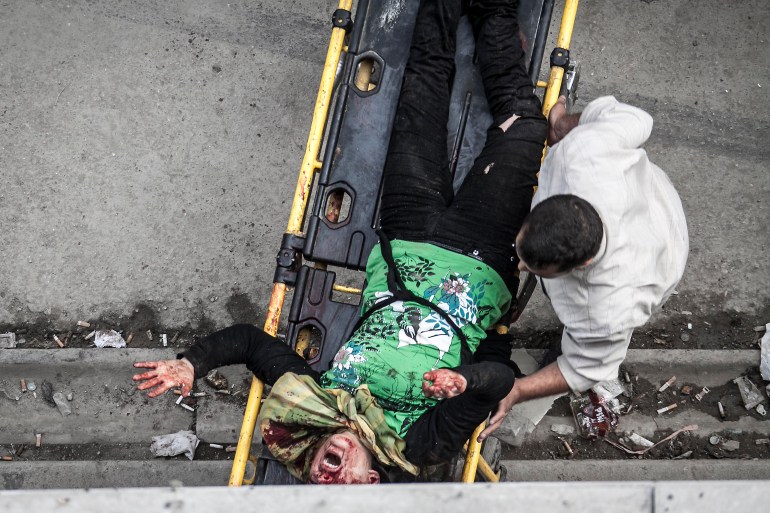
The field personnel seemed flustered; doctors, nurses and aides all rushed to clean up the lobby and triage patients, ordering non-essential people to leave. But one nurse, Bushra, 27, found time for her usual welcoming, friendly gesture, as she helped comfort all those around her with humble dedication. She had studied nursing and decided to join the hospital as a volunteer when the war started. Always around with a smile on her face, and ready to help others, she assisted the doctors and patients in the ICU and was also there to help babysit Rashed and Omar whenever she had a break.
As the months of war went on, Bushra married a fellow volunteer – one of the aides who guarded the front desk in the lobby. I heard it was a simple wedding, but a hearty celebration at the start of November, a few days before I left Aleppo for Antakya.
Two weeks after the wedding on November 21, an air raid struck Dar Al Shifa, and Bushra was among those killed. Her body was recovered from the rubble by her new husband.
Dr Osman and his family made it through the attack, having left the hospital one week before it was bombed. They fled Syria and now live as refugees somewhere in Europe.
November
Eight days after the November attack on the hospital, on a cold and dry evening, I entered Aleppo once again. The cab stopped on a busy, but darkened street in front of the shattered hospital building that used to be the only fully-lit ground floor we could see for blocks.
I stood in the cold, flicking through my memories, while my restless finger circled my camera’s shutter button. I wanted to capture a memorial photo, but the bodies had already been removed and bulldozers had already cleared the rubble away. The tragedy and drama of what had happened were now gone; only shadows remained.
A few locals walked by, unfazed, accustomed as they now were to tragedy. Around us, the last blue light of the day streamed down from the sky above. Because of the power cuts, the streets were turning dark. Only sparks of yellow flashed by as taxi cabs headed to the border.
I crossed to the opposite building and went up the staircase to take my shot. Only one was possible: the dramatic and apocalyptic scene of a busy street in a war-torn city bathed under the cold blue light of a winter’s evening, whose ruins fostered the last of the civilians living there.
That scene scared me like the very first time I entered Aleppo back in August 2012, as a warplane bombed the front line I was headed towards. Months later, this scene took me back to that night, as I recalled the feeling of the bombs thundering in the air, and I felt fear once more.
